
INSTRUCTION MANUAL
Read and understand all of the instructions and
safety information in this manual before operating
or servicing this tool.
Register this product at www.greenlee.com
52063472 REV 5 © 2016 Greenlee Textron Inc. 9/16
G3 Tugger
®
System
Español ............... 17
Français .............. 33

G3 Tugger
®
System
Greenlee / A Textron Company 4455 Boeing Dr. • Rockford, IL 61109-2988 USA • 815-397-7070
2
Description
The Greenlee G3 Tugger
®
Cable Pulling System is
intended to pull cable through conduit for light-duty
applications.
Safety
Safety is essential in the use and maintenance of
Greenlee tools and equipment. This instruction manual
and any markings on the tool provide information for
avoiding hazards and unsafe practices related to the
use of this tool. Observe all of the safety information
provided.
Purpose of this Manual
This manual is intended to familiarize all personnel with
the safe operation and maintenance procedures for the
Greenlee G3 Tugger
®
Cable Pulling System.
Keep this manual available to all personnel.
Replacement manuals are available upon request at no
charge at www.greenlee.com.
All specications are nominal and may change as design
improvements occur. Greenlee Textron Inc. shall not be liable for
damages resulting from misapplication or misuse of its products.
G3 Tugger is a registered trademark of Textron Innovations Inc.
® Registered: The color green for cable pulling equipment is a
registered trademark of Textron Innovations Inc.
KEEP THIS MANUAL
Table of Contents
Description .................................................................... 2
Safety ............................................................................ 2
Purpose of this Manual ................................................. 2
General Safety Rules ..................................................... 3
Specic Safety Rules and Symbols ........................... 4-6
Grounding Instructions .................................................. 6
FUNCTIONAL DESCRIPTION
Identication .............................................................. 7
Specications ............................................................ 8
Planning the Pull ........................................................ 8
ASSEMBLY
Boom Assembly/Disassembly ................................... 9
Boom Setup ........................................................ 10-11
Typical Setup for an Up Pull ................................. 11
Typical Setup for a Down Pull .............................. 11
Typical Setup for a Side Pull ................................ 11
OPERATION
Nose Assembly Operation ....................................... 12
Boom Operation ...................................................... 12
Handle Operation ..................................................... 12
Pivoting the Elbow and Nose Units ......................... 13
Puller Operation ....................................................... 14
SERVICE
Maintenance ............................................................ 15
ILLUSTRATIONS AND PARTS LISTS
G3 Tugger
®
Cable Pulling System .......................... 49
Head Assembly ........................................................ 50
Mobile Carriage ....................................................... 50
Motor Assembly .................................................. 51-52

G3 Tugger
®
System
Greenlee / A Textron Company 4455 Boeing Dr. • Rockford, IL 61109-2988 USA • 815-397-7070
3
GENERAL SAFETY RULES
WARNING! Read and understand all instructions.
Failure to follow all instructions listed below may result
in electric shock, re, and/or serious personal injury.
SAVE THESE INSTRUCTIONS
WORK AREA SAFETY
Keep your work area clean and well lit. Cluttered
benches and dark areas invite accidents.
Do not operate power tools in explosive atmo-
spheres, such as in the presence of flammable
liquids, gases, or dust. Power tools create sparks
which may ignite the dust or fumes.
Keep bystanders, children, and visitors away while
operating a power tool. Distractions can cause you to
lose control.
ELECTRICAL SAFETY
Grounded tools must be plugged into an outlet prop-
erly installed and grounded in accordance with all
codes and ordinances. Never remove the grounding
prong or modify the plug in any way. Do not use any
adapter plugs. Check with a qualified electrician if
you are in doubt as to whether the outlet is properly
grounded. If the tools should electrically malfunction or
break down, grounding provides a low resistance path
to carry electricity away from the user.
Avoid body contact with grounded surfaces such
as pipes, radiators, ranges, and refrigerators. There
is an increased risk of electric shock if your body is
grounded.
Do not expose power tools to rain or wet conditions.
Water entering a power tool will increase the risk of
electric shock.
Do not abuse the cord. Never use the cord to carry
the tools or pull the plug from an outlet. Keep cord
away from heat, oil, sharp edges or moving parts.
Replace damaged cords immediately. Damaged
cords increase the risk of electric shock.
When operating a power tool outside, use an
outdoor extension cord marked “W-A” or “W.” These
cords are rated for outdoor use and reduce the risk of
electric shock.
PERSONAL SAFETY
Stay alert, watch what you are doing and use
common sense when operating a power tool. Do not
use tool while tired or under the influence of drugs,
alcohol, or medication. A moment of inattention while
operating power tools may result in serious personal
injury.
Dress properly. Do not wear loose clothing or
jewelry. Contain long hair. Keep your hair, clothing,
and gloves away from moving parts. Loose clothes,
jewelry, or long hair can be caught in moving parts.
Avoid accidental starting. Be sure switch is off
before plugging in. Carrying tools with your nger on
the switch or plugging in tools that have the switch on
invites accidents.
Remove adjusting keys or switches before turning
the tool on. A wrench or a key that is left attached to a
rotating part of the tool may result in personal injury.
Do not overreach. Keep proper footing and balance
at all times. Proper footing and balance enables better
control of the tool in unexpected situations.
Use safety equipment. Always wear eye protection.
Dust mask, non-skid safety shoes, hard hat, or hearing
protection must be used for appropriate conditions.
TOOL USE AND CARE
Use clamps or other practical way to secure and
support the workpiece to a stable platform. Holding
the work by hand or against your body is unstable and
may lead to loss of control.
Do not force tool. Use the correct tool for your appli-
cation. The correct tool will do the job better and safer
at the rate for which it was designed.
Do not use tool if switch does not turn it on and off.
Any tool that cannot be controlled with the switch is
dangerous and must be repaired.
Disconnect the plug from the power source before
making any adjustments, changing accessories,
or storing the tool. Such preventive safety measures
reduce the risk of starting the tool accidentally.
Store idle tools out of reach of children and other
untrained persons. Tools are dangerous in the hands of
untrained users.
Maintain tools with care. Keep cutting tools sharp
and clean. Properly maintained tools, with sharp cutting
edges, are less likely to bind and are easier to control.
Check for misalignment or binding of moving parts,
breakage of parts, and any other condition that may
affect the tool’s operation. If damaged, have the tool
serviced before using. Many accidents are caused by
poorly maintained tools.
Use only accessories that are recommended by the
manufacturer for your model. Accessories that may
be suitable for one tool may become hazardous when
used on another tool.
SERVICE
Tool service must be performed only by qualified
repair personnel. Service or maintenance performed by
unqualied personnel could result in a risk of injury.
When servicing a tool, use only identical replace-
ment parts. Follow instructions in the “Maintenance”
section of this manual. Use of unauthorized parts or
failure to follow maintenance instructions may create a
risk of electric shock or injury.

G3 Tugger
®
System
Greenlee / A Textron Company 4455 Boeing Dr. • Rockford, IL 61109-2988 USA • 815-397-7070
4
SPECIFIC SAFETY RULES AND SYMBOLS
SAFETY
ALERT
SYMBOL
This symbol is used to call your attention to hazards
or unsafe practices which could result in an injury or
property damage. The signal word, dened below,
indicates the severity of the hazard. The message
after the signal word provides information for pre-
venting or avoiding the hazard.
Immediate hazards which, if not avoided, WILL result
in severe injury or death.
Hazards which, if not avoided, COULD result in
severe injury or death.
Hazards or unsafe practices which, if not avoided,
MAY result in injury or property damage.
Read and understand all of the
instructions and safety information
in this manual before operating or
servicing this tool.
Failure to observe this warning will
result in severe injury or death.
Do not operate the cable puller in
a hazardous environment. Hazards
include ammable liquids and gases.
Failure to observe this warning will
result in severe injury or death.
Electric shock hazard:
Disconnect the cable puller from
the power source before servicing.
Failure to observe this warning could
result in severe injury or death.
Attach only to steel or schedule 40 PVC conduit.
Do not attach to PVC conduit unless it is supported
within 2" of the end.
Failure to observe this warning could result in severe
injury or death.
Do not allow anything other than the
pulling rope to contact the capstan.
A grip, swivel, or other component
could break and strike nearby
personnel with great force.
Failure to observe this warning could
result in severe injury or death.
Do not stand directly under a vertical
pull. Cable could fall suddenly from the
conduit, injuring nearby personnel.
Failure to observe this warning could
result in severe injury or death.

G3 Tugger
®
System
Greenlee / A Textron Company 4455 Boeing Dr. • Rockford, IL 61109-2988 USA • 815-397-7070
5
SPECIFIC SAFETY RULES AND SYMBOLS
An under-rated or worn rope may break and whip
violently. Use a polyester or polyester-jacketed rope
with a breaking strength of 8000 pounds.
Failure to observe this warning could result in severe
injury or death.
• Check the condition of the entire rope before use.
A worn or damaged rope can break under tension
and whip violently.
• Do not maintain a stationary rope on a rotating
capstan. The wear generated may cause the rope
to break under tension and whip violently.
Failure to observe these warnings could result in
severe injury or death.
Attach the pulling rope to the cable with appropriate
types of connectors. Select connectors with a rated
capacity of 2000 pounds. An under-rated connector
can break under tension.
Failure to observe this warning could result in severe
injury or death.
Do not put ngers through holes in
elbow unit. Rotating parts may cut off
ngers.
Failure to observe this warning could
result in severe injury or death.
Keep hands away from the capstan.
Rope at the capstan can crush a hand.
Failure to observe this warning could
result in severe injury or death.
Do not wrap rope around hands,
arms, waist or other body parts.
Do not stand in spent coils or tailed
rope. Hold rope so that it may be
released quickly.
Failure to observe this warning could
result in severe injury or death.
Rope, cable, or a connecting device can break under
tension, causing the rope to whip violently.
• Do not allow any unnecessary personnel to remain
in the area during the pull.
• Do not allow any personnel to stand in line with the
pulling rope.
Failure to observe these warnings could result in
serious injury or death.
Do not allow the rope to overlap on the capstan.
If the rope approaches the top of the angled part of
the capstan, relax the tailing force. If an overlap does
occur, shut off the puller immediately.
Failure to observe this warning could result in severe
injury or death.
Tipping hazard:
Lower boom tubes to completely collapsed state
before transporting the cable puller.
Failure to observe this warning could result in severe
injury or death.

G3 Tugger
®
System
Greenlee / A Textron Company 4455 Boeing Dr. • Rockford, IL 61109-2988 USA • 815-397-7070
6
SPECIFIC SAFETY RULES AND SYMBOLS
Do not operate the puller without the
guards in place.
Failure to observe this warning could
result in severe injury or death.
Use this tool for manufacturer’s intended purpose
only. Do not use the cable puller as a hoist or winch.
• The cable puller cannot lower a load.
• The load may fall.
Failure to observe this warning could result in severe
injury or death.
Entanglement hazard:
• Do not operate the cable puller while wearing
loose-tting clothing.
• Retain long hair.
Failure to observe these warnings could result in
severe injury or death.
Wear eye protection when using this
tool.
Failure to wear eye protection could
result in severe eye injury from ying
debris.
Grounding Instructions
Electric shock hazard:
• Do not modify the plug provided
with the tool.
• Connect this tool to a grounded
receptacle on a 15-amp GFCI-
protected circuit.
Failure to observe these warnings
could result in severe injury or death.
This tool must be grounded. In the event of a malfunc-
tion or breakdown, an electrical ground provides a path
of least resistance for the electric current. This path of
least resistance is intended to reduce the risk of electric
shock.
This tool’s electric cord has a grounding conductor and
a grounding plug as shown. Do not modify the plug.
Connect the plug to a corresponding GFCI-protected
receptacle that is properly installed and grounded in
accordance with all national and local codes and
ordinances.
Do not use an adapter.
NEMA 5-15
ReceptaclePlug

G3 Tugger
®
System
Greenlee / A Textron Company 4455 Boeing Dr. • Rockford, IL 61109-2988 USA • 815-397-7070
7
FUNCTIONAL DESCRIPTION
Identification
G3 Cable Pulling System
1. Nose Assembly
2. Ring Pull Detent Pin
3. Handle
4. Clamp Assembly
5. Sheave
6. Detent Pin
7. Top Extension Boom Tube
8. Mid Extension Boom Tube
9. Ring Pull Detent Pin
10. Motor Adapter Assembly
11. Hitch Clip
12. Motor Assembly
13. Power Cord
14. Motor
15. Circuit Breaker and Switch
16. Dolly Base Assembly
17. Two-Speed Capstan
18. Motor Attachment
19. Right Angle Sheave
1
10
11
12
13
14
15
18
19
7
8
17
16
9
2
3
6
5
4

G3 Tugger
®
System
Greenlee / A Textron Company 4455 Boeing Dr. • Rockford, IL 61109-2988 USA • 815-397-7070
8
Specifications
Weight .......................................................................................................123 lb (56 kg)
Dimensions
Length ................................................................................................. 1.4 ft (0.43 m)
Width ................................................................................................. 1.95 ft (0.59 m)
Height .................................................................................................. 4.5 ft (1.37 m)
Motor ............................................................................... 120 VAC, 50/60 Hz, 12 amps
Speed (high)
No Load..................................................................................... 97 ft/min (30 m/min)
500 lb ........................................................................................ 59 ft/min (18 m/min)
1000 lb ...................................................................................... 36 ft/min (11 m/min)
Speed (low)
No Load..................................................................................... 41 ft/min (12 m/min)
1000 lb ........................................................................................ 21 ft/min (6 m/min)
2000 lb (intermittent – 5 min on, 20 min off) ................................ 13 ft/min (4 m/min)
Puller Operation—Capstan
Low Speed ....................................................................................................5 wraps
High Speed ...................................................................................................4 wraps
Pulling Rope ........................................................1/2" double-braided composite rope
10,000 lb average breaking strength
Planning the Pull
• Pull in a direction that will require the lowest amount
of pulling force.
• Plan several shorter pulls rather than fewer longer
pulls.
• Locate the puller as close to the end of the conduit
as possible to minimize the amount of exposed rope
under tension.
• Place each component so that the pulling forces are
used effectively.
• Select an anchoring system: adapter sheaves, which
are preferred, or the oor mount.
• Verify that each component has the proper load
rating.
• Inspect the structural supports. Verify that they have
enough strength to withstand the maximum forces
that may be generated.

G3 Tugger
®
System
Greenlee / A Textron Company 4455 Boeing Dr. • Rockford, IL 61109-2988 USA • 815-397-7070
9
ASSEMBLY
Boom Assembly/Disassembly
1. Set the base of the dolly
on the ground where it
is at and has a strong
base structure.
2. Insert the motor adapter
assembly into the dolly.
Make sure to insert the motor
mount as shown in Figure 2.
Attach and lock it with the
pin.
3. Slide in the mid exten-
sion and top extension
boom tubes as shown
in Figure 3. Make sure
all the ring pull detent
pins engage with the
other tubes.
4. Slide the nose unit
into the top extension
boom tube using the
ring pull detent pin.
5. Finally, attach the
motor assembly unit
to the motor adapter
assembly as shown
in Figure 5, using two
clevis pins to lock it in
place.
Tip: Lay the entire
assembly on the
ground to make it
easier to insert the
motor assembly unit.
Note: Lower boom tubes
to completely collapsed
state as shown in Figure
5 before transporting the
cable puller.
Figure 1
Figure 2
Figure 3 Figure 5
Figure 4

G3 Tugger
®
System
Greenlee / A Textron Company 4455 Boeing Dr. • Rockford, IL 61109-2988 USA • 815-397-7070
10
Boom Setup
1. Place puller in approximate position of conduit.
2. Align nose with conduit and lock it in place with long
detent pin.
3. Butt nose up against conduit threads and conduit
locking nut. Place clamping plate inside of conduit
and tighten knurled nut. Take lock nut off temporar-
ily for more thread engagement if needed.
4. If the conduit is free standing or without threads,
position the nose so that the conduit will butt up
against the ats of the clamping plate.

G3 Tugger
®
System
Greenlee / A Textron Company 4455 Boeing Dr. • Rockford, IL 61109-2988 USA • 815-397-7070
11
Boom Setup (cont’d)
Typical Setup for a Side Pull
Typical Setup for an Up Pull Typical Setup for a Down Pull

G3 Tugger
®
System
Greenlee / A Textron Company 4455 Boeing Dr. • Rockford, IL 61109-2988 USA • 815-397-7070
12
OPERATION
Nose Assembly Operation
Refer to the illustration below.
1. Pull out the ring pull detent pin (1).
2. Rotate the nose assembly to the correct position for
the pull.
3. Make sure the ring pull detent pin (1) is engaged
with the circle tube.
Boom Operation
Refer to the illustration below.
Raising the Boom
Make sure to raise the top extension rst before raising
the mid extension.
Note: When raising either extension, stop
when the paint color changes from green
to silver. Do not raise the extensions past
the fourth hole from the end as shown
here.
1. Pull out the ring pull detent pin (2).
2. Extend the top extension to the correct height.
3. Pull out the ring pull detent pin (3).
4. Extend the mid extension to the correct height.
5. Make sure the ring pull detent pins (2, 3) are
engaged with the boom tubes.
Lowering the Boom
1. Hold the boom tube with one hand. Be aware of the
weight.
2. Lift up the boom tube slightly and pull out the ring
pull detent pin.
3. Move the boom tube to the correct height while
pulling the ring pull detent pin. DO NOT allow the
boom tube to drop freely.
4. When the correct height is reached, make sure the
ring pull detent pin is engaged with the boom tube.
Handle Operation
Refer to the illustration below.
Rotating the Handles
1. Pull out the ring pull detent pins (4).
2. Rotate the handles to the next position.
3. Make sure the pins are engaged to the handle.
Nose Assembly
Ring Pull Detent Pin (2)
Ring Pull Detent Pin (3)
Ring Pull Detent Pin (1)
Handle
Ring Pull Detent Pin (4)
Ring Pull Detent Pin (4)
Mid Extension Boom Tube
Top Extension Boom Tube
Setting the Handle Height
Changing the boom tube height also changes the
handle height. Refer to “Boom Operation” above for
more information.
Green
Silver

G3 Tugger
®
System
Greenlee / A Textron Company 4455 Boeing Dr. • Rockford, IL 61109-2988 USA • 815-397-7070
13
Pivoting the Elbow and Nose Units
The elbow and nose units are physically identical and
can be used interchangeably. For the sake of clarity, in
this manual:
• “Nose” refers to the unit that attaches to the conduit
via couplers.
• “Elbow” refers to the unit that connects the circle
tubes.
The elbow/nose units pivot and lock at various degrees
of rotation. They are locked in place by a detent pin set
located between the sheave and the end of the boom
tube receptacle. To pivot, squeeze the grips on the
detent pins fully inward.
Squeeze
Grips
Make sure the detent pins on both sides are fully
retracted before trying to pivot. Release the grips when
the desired pivot angle is reached, and pivot slightly
more to allow both detents to engage in the closest
holes.
When the detent pins are squeezed to the fully inward
position, they can be locked in place by twisting them
counterclockwise.
Twist to lock.
Never pull cable with the detent pins locked inward;
both the elbow and nose must be locked from pivoting
before pulling.

G3 Tugger
®
System
Greenlee / A Textron Company 4455 Boeing Dr. • Rockford, IL 61109-2988 USA • 815-397-7070
14
Puller Operation
After shing the rope through the conduit, wind it
around the capstan. The puller will pull at two different
speeds depending on whether the rope is on the large
or small diameter. To pull at the lower speed, place
the rope at the inner most part of the smaller capstan
diameter and wind the rope clockwise and outward. To
pull faster, do the same on the large diameter section of
the capstan.
Low Speed
High Speed
When ready to start pulling cable, use only a few
wraps of rope on the capstan at rst. Using too many
wraps will reduce your ability to control the rope on the
capstan. Use the right angle sheave to position yourself
so you are not in line with the high-tension rope in case
it, the cable or the connector breaks.
Turn on the puller and gradually apply a tailing force to
the free end of the rope. If the tailing force becomes
uncomfortably high, turn off the puller and add another
wrap. If the rope starts climbing up the inside ramp
of the capstan, ease up in the tailing force to allow it
to settle down to the base diameter. If it is continually
climbing up the ramp, turn off the puller and remove a
wrap.

G3 Tugger
®
System
Greenlee / A Textron Company 4455 Boeing Dr. • Rockford, IL 61109-2988 USA • 815-397-7070
15
Tool service must be performed only by qualified
repair personnel. Service or maintenance performed by
unqualied personnel could result in a risk of injury.
When servicing a tool, use only identical replace-
ment parts. Follow instructions in the “Maintenance”
section of this manual. Use of unauthorized parts or
failure to follow maintenance instructions may create a
risk of electric shock or injury.
Maintenance
Shut off motor and unplug unit before dismantling or
servicing.
Failure to observe this warning will result in severe
injury or death.
Drive Chains
Removal
Remove the 6 screws securing the chain guards. Slide
out the chain guards—motor end rst—and remove.
Remove the bolt securing the capstan to the puller and
the screw securing the drive sprocket to the motor.
Remove all the
washers, noting their proper order for
reassembly. Pry off
the drive sprocket while pulling out
on the capstan unit and remove both. Pull off the drive
chain. Reassemble with the connecting link retainer
facing outward.
Wear
Check to make sure all the links pivot freely without
binding. Replace the chain if any resistance is felt.
Alternately load the links in tension and compression
along the length to check for any perceptible free play.
There should be a barely detectable amount of free
play. If any joint has enough free play to be easily seen
(about 1/64"), replace the chain. Always replace the
entire chain, including the connecting link as a whole
unit.
Lubrication
Lubricate the drive chains after every 40 hours of
operation. Lubricate between the chain plates from the
inside of the loop with any high quality chain lube or an
80W–90W gear oil.
Adjustment
Loosen the 4 screws securing the motor. Push the
motor away from the capstan while retightening the
motor screws.
Capstan
Removal
See drive chain removal.
Wear
Check for wear on the outside of the capstan. If the
rope has worn a groove on the 2" diameter portion of
the capstan, replace it. Check for bearing wear. If the
brass bearing ID exceeds 1.020" or if there is visible
radial free play between the capstan and shaft, replace
the capstan and bearing assembly.
Lubrication
Lubricate the capstan shaft after every 20 hours of
operation. Liberally apply a multipurpose NLGI grade 2
grease to the capstan shaft and bearing.
Adjustment
If the capstan or puller frame is replaced, adjust the
axial free play to less than 1/32". Assemble the inner
thrust washers and capstan to the frame without the
chain. Attach with the bolt and retaining at washer.
If the capstan binds, add 52023123 shim washers one
at a time until it rotates freely. If it has more than 1/32"
of axial free play, add 50179160 ber washers to set the
free play at less than 1/32".
Motor
Commutator Brushes
Check the commutator brushes after every 40 hours of
operation. Remove the motor brush caps and brushes.
Measure the brush lengths. If length of either brush is
less than 3/8", replace both brushes.
Other
Anti-Reverse Pawl
Check that the pawl pivots freely on its shaft. Clean any
rust or debris from the shaft or pawl bore.
SERVICE

G3 Tugger
®
System
Greenlee / A Textron Company 4455 Boeing Dr. • Rockford, IL 61109-2988 USA • 815-397-7070
16
Page is loading ...
Page is loading ...
Page is loading ...
Page is loading ...
Page is loading ...
Page is loading ...
Page is loading ...
Page is loading ...
Page is loading ...
Page is loading ...
Page is loading ...
Page is loading ...
Page is loading ...
Page is loading ...
Page is loading ...

Sistema G3 Tugger
®
Greenlee / Una empresa Textron 4455 Boeing Dr. •Rockford, IL 61109-2988 EE.UU. •815-397-7070
32
Page is loading ...
Page is loading ...
Page is loading ...
Page is loading ...
Page is loading ...
Page is loading ...
Page is loading ...
Page is loading ...
Page is loading ...
Page is loading ...
Page is loading ...
Page is loading ...
Page is loading ...
Page is loading ...
Page is loading ...

SystèmeG3 Tugger
®
Greenlee/ A Textron Company 4455Boeing Dr. •Rockford, IL61109-2988USA •815-397-7070
48

G3 Tugger
®
System
Greenlee / A Textron Company 4455 Boeing Dr. • Rockford, IL 61109-2988 USA • 815-397-7070
49
ILLUSTRATIONS AND PARTS LISTS
LISTAS DE PARTES E ILUSTRACIONES
ILLUSTRATIONS ET NOMENCLATURES DES PIÈCES
2
3
4
5
8
7
6
1
1 52066724 Nose assembly .....................................1
2 52066725 Tube extension, top weldment
(painted) ................................................1
3 52066726 Tube extension, middle assembly.........1
4 52066727 Motor adapter assembly .......................1
5 Dolly base assembly ............................. 1
6 Motor assembly ....................................1
7 Clip, hitch pin ........................................ 3
8 Pin, clevis .............................................. 3
52066173 Dolly assembly kit
[includes 5, 7 (1), 8 (1)]
52066174 Motor assembly kit
[includes 6, 7 (2), 8 (2)]
Key Part No. Description Qty
G3 Tugger
®
Cable Pulling System
G3 Tugger
®
Sistema de tracción de cables
Système de treuil à câbleG3 Tugger
®

G3 Tugger
®
System
Greenlee / A Textron Company 4455 Boeing Dr. • Rockford, IL 61109-2988 USA • 815-397-7070
50
1 52066729 Dolly bottom plate weldment ...............1
2 Wheel ....................................................2
3 Clip, hitch pin ........................................ 2
52066178 Wheel assembly kit (includes 2, 3)
1 52066728 Nose weldment ..................................... 1
2 Nose weldment, hinged ........................ 1
3 Clamp weldment assembly ..................1
4 Spring, compression,
.53 x .66 x 1.25 (H6245A) .....................1
5 Nut ........................................................1
6 Nut, acorn-light, 3/8-16 ........................1
7 Sleeve detent, black oxide....................1
8 Detent, black oxide ............................... 2
9 Grip detent, 0.187 ................................. 4
10 Pin, clevis, ø 1/2 x 4 ..............................2
11 Spring, compression,
.177 ID x .329 OD x 1.410/1.420 L .......1
Key Part No. Description Qty
Key Part No. Description Qty Key Part No. Description Qty
Mobile Carriage / Carro móvil
Head Assembly
Conjunto de la cabeza
Ensemble tête
3
2
1
13
1
3
4
5
6
9
8
15
14
10
16
17
18
2
11
12
7
12 Grip .......................................................2
13 52066741 Sheave ..................................................2
14 Rollpin, .187 x 2.00 ............................... 2
15 Clip, hitch pin, ø .12 x 2.56 ................... 2
16 Plunger ..................................................3
17 Spring, collar .........................................3
18 Ring, pull ............................................... 3
52066177 Nose handle assembly kit (includes 2, 12)
52066175 Clamp assembly kit (includes 3–6)
52063080 Lock pin assembly kit
(includes 7–9, 11, 14)
52066176 Spring-loaded pin assembly kit
(includes one each of 16–18)
ILLUSTRATIONS AND PARTS LISTS (cont’d)
LISTAS DE PARTES E ILUSTRACIONES (cont.)
ILLUSTRATIONS ET NOMENCLATURES
DES PIÈCES (suite)
Page is loading ...
Page is loading ...
-
 1
1
-
 2
2
-
 3
3
-
 4
4
-
 5
5
-
 6
6
-
 7
7
-
 8
8
-
 9
9
-
 10
10
-
 11
11
-
 12
12
-
 13
13
-
 14
14
-
 15
15
-
 16
16
-
 17
17
-
 18
18
-
 19
19
-
 20
20
-
 21
21
-
 22
22
-
 23
23
-
 24
24
-
 25
25
-
 26
26
-
 27
27
-
 28
28
-
 29
29
-
 30
30
-
 31
31
-
 32
32
-
 33
33
-
 34
34
-
 35
35
-
 36
36
-
 37
37
-
 38
38
-
 39
39
-
 40
40
-
 41
41
-
 42
42
-
 43
43
-
 44
44
-
 45
45
-
 46
46
-
 47
47
-
 48
48
-
 49
49
-
 50
50
-
 51
51
-
 52
52
Ask a question and I''ll find the answer in the document
Finding information in a document is now easier with AI
in other languages
- français: Greenlee G3 Tugger Manuel utilisateur
- español: Greenlee G3 Tugger Manual de usuario
Related papers
-
Greenlee G3 Tugger User manual
-
Greenlee 6800, 6805A Ultra Tugger ALA 115V for UK User manual
-
Greenlee 52087824 G10 TUGGER User manual
-
Greenlee 6800-22 6802-22 6805-22 Ultra Tugger S/C ADB User manual
-
Greenlee Ultra Tugger 5 - 6501, 6505G, 6503 - Serial AHL User manual
-
Greenlee 658 Tray Type Sheave User manual
-
Greenlee Ultra Tugger User manual
-
Greenlee Ultra Tugger User manual
-
Greenlee 6800-22 6802-22 6805-22 Ultra Tugger ADB User manual
-
Greenlee Ultra Tugger User manual
Other documents
-
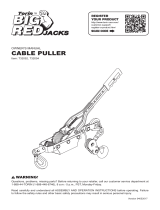 Big Red T32054 User manual
Big Red T32054 User manual
-
Toro Capstan Adaptor, Dingo Compact Utility Loader Installation guide
-
CHANCE Series 90 Capstan Hoist Owner's manual
-
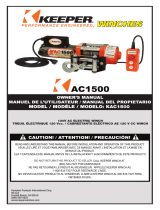 Keeper KAC15042 User manual
Keeper KAC15042 User manual
-
Hubbell P308-0880 Owner's manual
-
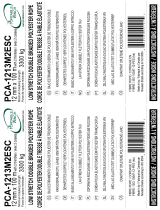 Portable Winch PCA-1213M2ESC Owner's manual
Portable Winch PCA-1213M2ESC Owner's manual
-
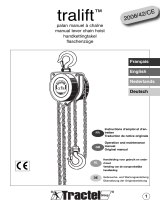 Tractel Tralift User manual
Tractel Tralift User manual
-
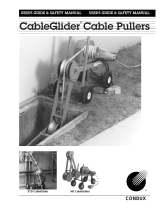 Condux Power Cable Pullers Owner's manual
Condux Power Cable Pullers Owner's manual
-
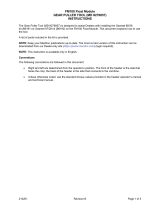 MacDon MD #214201 B Installation guide
MacDon MD #214201 B Installation guide
-
KNOVA KN 7415-02 Owner's manual

























































